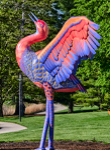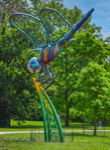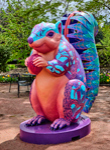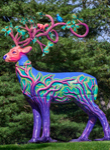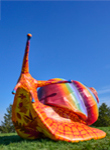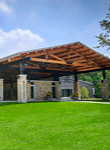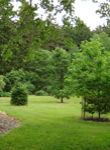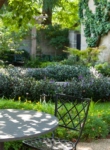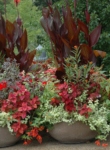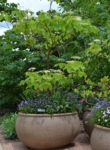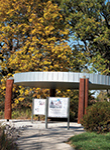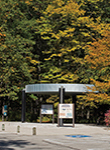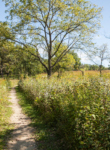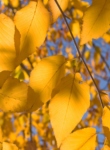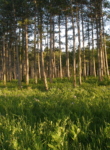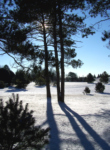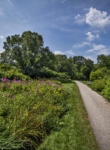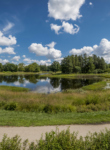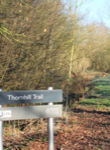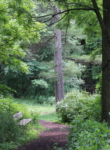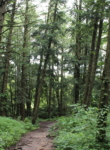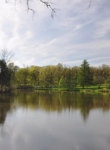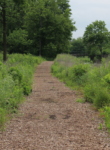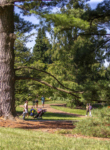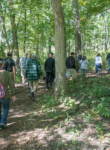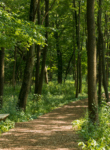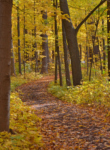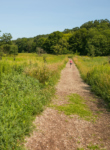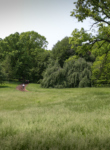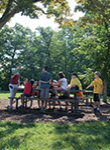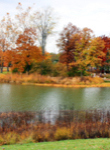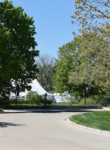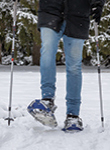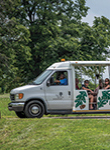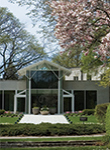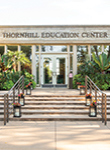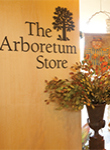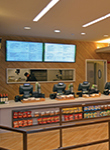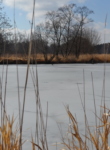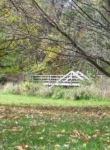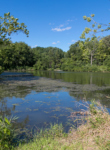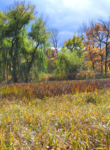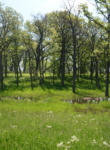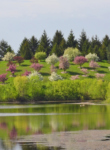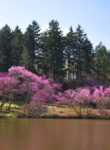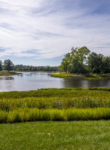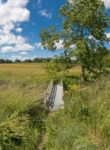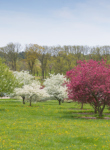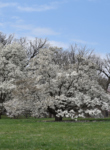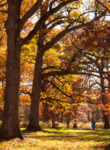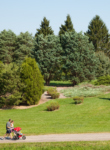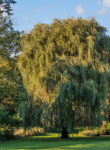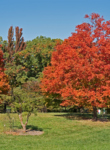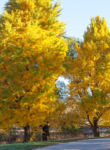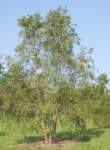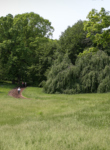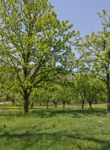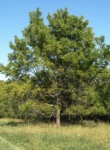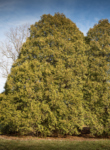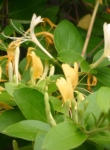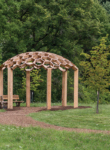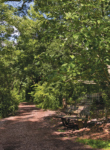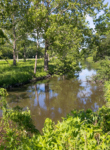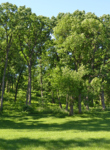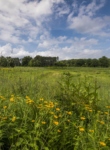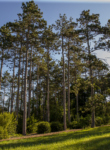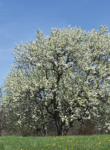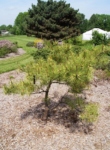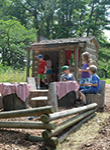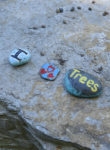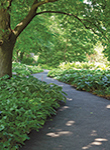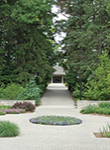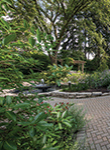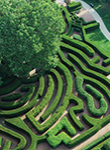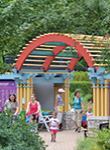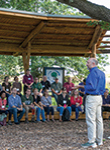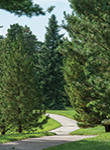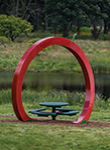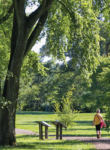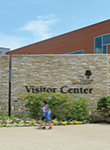Profuse, white, daisylike flower heads with yellow centers cover heath aster from late summer to mid-fall. The stems are filled with numerous narrow, pointed leaves that give heath aster an appearance similar to flowering heath. In dry to moist soils with full to partial sunlight, this is a perennial that can be planted in cut-flower gardens, rock gardens, pollinator gardens, drought-tolerant gardens, native gardens, cottage gardens, meadows, and woodlands. This species is native to the Chicago region according to Swink and Wilhelm’s Plants of the Chicago Region and current research.
Size and method of spreading:
Heath aster reaches heights of 1 to 3 feet tall and spreads 1 to 1 ½ feet wide at maturity. It spreads by producing offsets through underground stem structures (rhizomes) and by self-seeding.
Native geographic location and habitat:
The native range of heath aster includes the Central and Eastern United States. C Value: 6.
Pollinators and wildlife:
The white flowers of heath aster are known to attract a variety of pollinators, including bees, beetles, butterflies, flies, moths, skippers, and wasps. The seeds of heath aster act as a resource for birds, specifically wild turkeys. Heath aster serves as a host plant to the larvae of the pearl crescent butterfly and the wavy-lined emerald moth.
Leaf description:
The leaves of heath aster are plentiful and small, alternating in arrangement on the stems. The largest leaves are produced around the base of the plant (basal leaves) and are up to one-quarter inch wide and 2 inches long and are more spatula shaped (narrowly oblanceolate) than the leaves along the stems (cauline). The basal and lowest cauline leaves wither and drop before the flower heads appear. The long, sharply pointed, narrow, linear leaves reduce in size as they ascend the stems. Heath aster leaves have no teeth along the edges (entire margins) and attach directly to the stems (sessile). In the leaf axils, there are often clusters (fascicles) of tiny leaves. Both the upper and lower surfaces of the leaves may be hairless (glabrous) or have sparse, short, stiff hairs (pubescent).
Flower description:
Heath aster flower heads are small, daisylike composites of white, narrow, petallike ray flowers surrounding a center of yellow disk flowers that turn a reddish color when they mature. The composite flower heads are one-third to one-half of an inch in diameter. The flower heads grow on individual stalks that form complex panicles, often appearing on one side of the flowering stems. Each flower head has between eight to 20 ray flowers and numerous disk flowers. Long, sharply pointed, leaflike appendages (bracts) occur in three to four layers around the bases of the flowerheads. The numerous bracts have white bases and green tips.
Fruit description:
Heath aster has small dry fruits (achenes). These are tipped with tufts of white hair that help distribute the fruit via the wind.
Plant Care:
Taller plants may require staking to avoid flopping due to the weight of the flowers.
List of pests, diseases, and tolerances:
Some pests that feed on the foliage of heath aster include aphids, caterpillars of butterflies and moths, lace bugs, and plant bugs. Immature plants are foraged by deer and rabbits, but mature heath asters are not.
